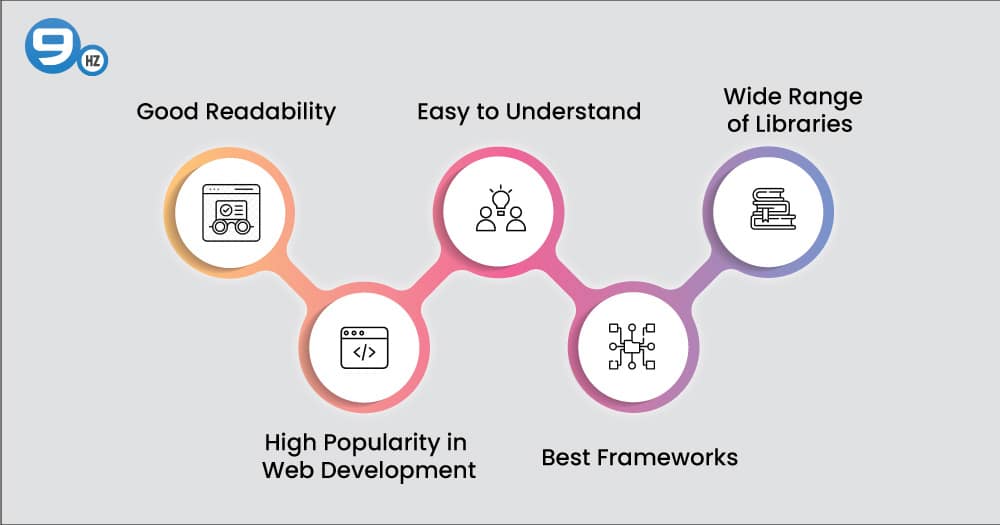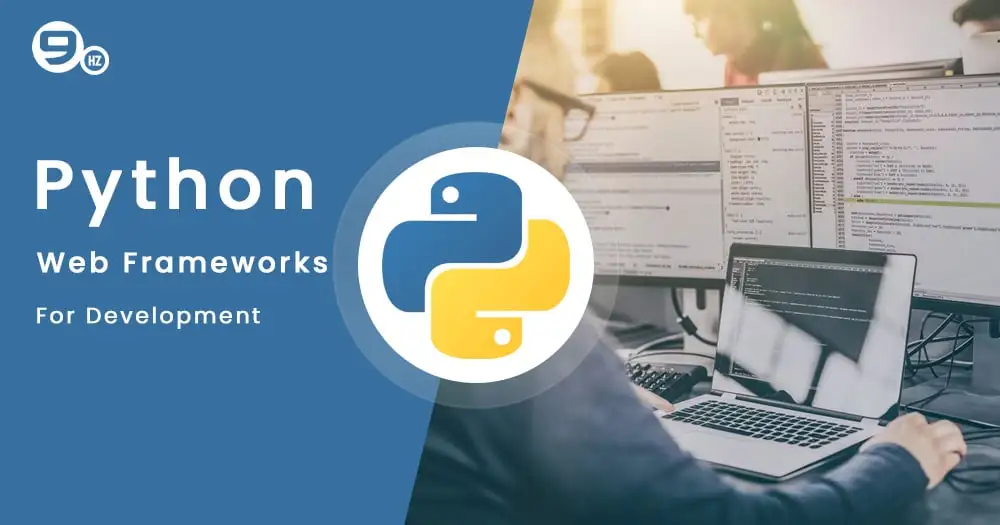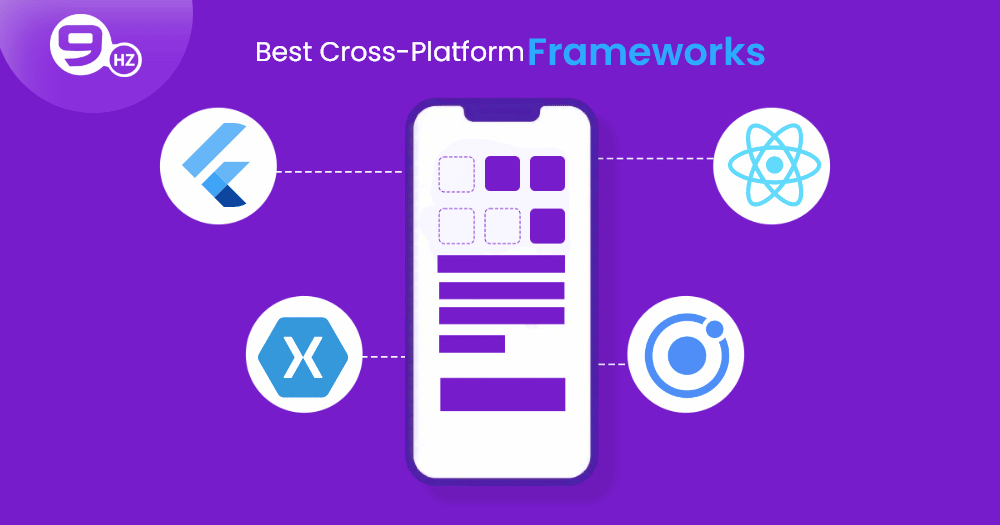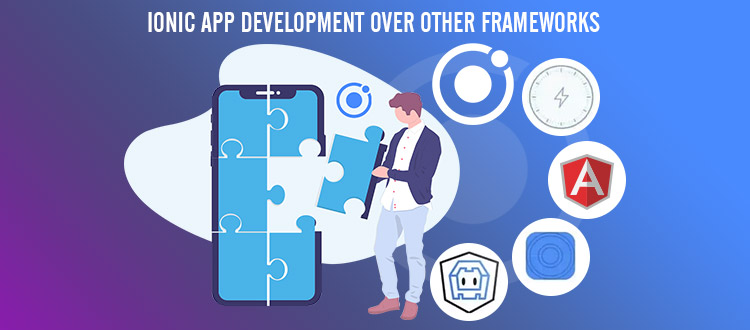Python is the most widely used, readable, and simple-to-use web programming language. It’s not just for web development, though. Python is a powerful and versatile programming language for data science, artificial intelligence (AI), machine learning (ML), and scientific computing.
Besides, it is used in many industries, including finance, science and education, computers, electronics, technology, and many more. Large corporations, such as Google, Facebook, Instagram, Netflix, and others, use Python in a number of ways.
From powerful Web Development Frameworks to micro-frameworks, it has played a significant role in web development for over two decades. According to the Stack Overflow Survey of 2022, 45.53% of professional developers use Python as their primary programming language.
While this expansion is impressive, it is not unexpected. Python has a wide range of frameworks for web development, data science, and other applications. Therefore, this article will focus on a detailed list of Python Web Frameworks so that you can get the most out of them.
What is Python Web Framework?
The Python Web framework is a set of packages or modules that enable developers to create Web applications or services. It eliminates the need for developers to deal with low-level details such as protocols, sockets, and process/thread management. To put it another way, frameworks render the generic functionality of the programme you’re attempting to create so that your developers don’t have to start from scratch.
Python frameworks, in particular, will use the Python programming language to automate standard application development steps. As a result, Python developers will save time on development, and your company will benefit in the long run.
Python Frameworks List for Web Development
| # | Frameworks | release date | latest version |
|---|---|---|---|
| 1 | django | 25 Dec 2012 | 4.0.3 |
| 2 | Pyramid | 4 Dec 2014 | 2.0 |
| 3 | Bottle | 1 July 2009 | 0.12 |
| 4 | Tornado | 10 September 2009 | 6.1 |
| 5 | bluebream | 26 June 2010 | 1.0 |
| 6 | CherryPy | 7 May 2004 | 18.6.1 |
| 7 | Grok | 2006 | 3.2 |
| 8 | TurboGears | September 2005 | 2.4.3 |
| 9 | Web2Py | 27 September 2007 | 2.21.1 |
| 10 | Flask | 16 April 2010 | 1.1.4 |
| 11 | Dash | 2013 | v2.4.1 |
| 12 | Growler | 07 september 2016- | 0.8.0 |
| 13 | Sanic | 31March 2022 | 22.3.0 |
The popular Python web frameworks that top python development companies and developers should use in 2023 to improve website performance and time-to-market are listed below.

1. Django– Open-source python web framework
Django is free-to-use Python web frameworks that allow python developers to quickly create complex code and apps. Developers can quickly create high-quality web applications and APIs using the Django framework. It’s because this top-of-the-line Python web development framework comes with a robust set of features and libraries. This eliminates the need for a lot of coding and allows for code reuse. As a result, the web application development project streamlines and shortens the time it takes for an app to reach the market.

According to reports, over 12,000 known projects built with Django frameworks are causing a stir in the market. This distinguishes it as one of the best Python frameworks for web development in 2023
Key Features of Django
- Assists you in defining patterns for your app’s URLs.
- Built-in authentication system.
- A simple but effective URL system.
- Object-oriented programming language database that offers the best data storage and recovery.
- The automatic admin interface feature allows you to customize the editing, adding, and deleting of items.
- Multiple cache mechanisms are supported by a cache framework
2. Pyramid- Open source web application development framework in python
Pyramid is one of the Python web frameworks with lots of features. It also has a wide range of applications, including websites, web APIs, and anywhere you may want to use a popular programming language like Python is needed. Pyramid is also known for its expandability, testability, and flexible, modular architecture.

One of Python’s most valuable assets as a developer language is its community support, which is evident here in the form of user involvement on mailing lists, IRC channels, Stack Overflow, and other sites.
Although there are several other Python frameworks that compete with or complement Pyramid, many leading technology companies have proven it to be a good choice. Besides, several Python development companies also recommend the Pyramid web framework.
Key Features of the Pyramid
- It allows you to run both small and large apps efficiently.
- HTML structure validation and generation
- HTML structure validation and generation
- All-embracing templating and asset details
- Testing, support, and extensive data documentation
- Authentication and flexible approval
3. Bottle– Micro web framework in Python
Bottle is also one of the most prevalent Python micro framework, and it’s ideal for rapid development and small web apps. It’s a WSGI-compliant framework that’s quick, simple, and lightweight, and it’s distributed as a single file module. Bottle, which was originally designed for building APIs, implements everything in a single source file and includes only the most basic tools, such as routing and templating. For those with a basic understanding of Python and web development, the learning curve is extremely simple.

Bottle is the most useful Python framework for creating mobile applications, and it’s a great choice for those who want a lot of flexibility. Bottle’s key features include: clean and dynamic URL routes and mapping; speed optimization; Built-in HTTP development server; plugin support for Google App Engine and various databases; Integrated template engines.
Key Features of Bottle
- Using simplified syntax, create spotless and dynamic URL routes for mapping.
- Built-in template engine and backing that is quick and pythonic.
- WSGI framework is compatible with CGI, and understanding WSGI internals is simple.
- Allows data, cookies, file uploads, and other HTTP-related metadata to be accessed quickly.
- Worked as an multi threaded web server and backend for glue, fapws3, flup, and other WSGI-capable HTTP servers.
- Speed optimizations for testing and high performance
4. Tornado
Tornado is a Python web framework created by FriendFeed, but it was later acquired by Facebook in 2009. It is well-known for its high task performance, as the framework is capable of threading more than 10,000 connections simultaneously. Tornado is an open-source asynchronous framework for performing I/O operations.

Real-time services, user localization, user authentication support, and web templates are just a few of Tornado’s highlights. Python Developers can also use third-party integrations such as Google OpenID/OAuth, Facebook login, and Yahoo BBAuth.
Key Features of Tornado
- Allows third-party authentication and authorization schemes.
- Superior quality, real-time services, and non-blocking HTTP customers
- It produces high-quality results.
- Assistance with interpretation and localization.
- Web templates and user authentication are both supported.
5. BlueBream
BlueBream is also a web application framework, server, and library for python developers that is open-source. It was formerly known as Zope 3 and was created by the Zope team.

This framework works best for medium and large activities that are divided into re-usable and well-suited segments.
BlueBream (ZTK) uses the Zoop Toolkit. It has extensive experience ensuring that it meets the primary requirements for long-lasting, consistent, and adaptable programming. You might be interested to learn how to install python pandas.
Key Features of BlueBream
- It emphasizes Python Web Server Gateway Interface (WSGI) compatibility.
- Frameworks for unit and functional testing.
- The fundamental approach to plugged security.
- An XHTML-compliant language for developing templates.
- A tool for automatically generating forms.
- Separation of concerns is used in the Zope Component Architecture (ZCA) to create reusable components.
6. CherryPy– Object-oriented web application framework
Cherry Py is a fantastic popular python web frameworks that can be used to build a wide range of web applications. It’s intended to be simple to understand and use. It is one of the most approachable frameworks on our python frameworks list because of its focus on simplicity and usability.

Cherry Py might be perfect if you’re an intermediate developer looking to attempt something new. While advanced developers may find its features lacking, it provides an opportunity for beginners to gain experience with Python before moving on to more complex frameworks.
Cherry Py’s main selling point is that it enables users to operate their code without having to rely on other people or services. You can create an application entirely from CherryPy components.
Key Features of CherryPy
- A WSGI thread-pooled webserver that is consistent and HTTP/1.1 compliant.
- It’s simple to run multiple HTTP servers (for example, on multiple ports) at once.
- Python 2.7, 3.5, PyPy, Jython, and Android are all supported.
- cross site scripting, sessions, caching, authentication, static content, and many other features are all built-in.
- A powerful configuration system for developers and deployers alike
- Built-in profiling, coverage, and testing support
Create Your Own Website & Earn Huge
Request A Free Quote
7. Grok
The Grok framework is a web framework built with the Zope toolkit. It focuses on two general principles: convention over configuration and DRY (Don’t Repeat Yourself) to provide developers with a maneuverable development experience. It’s an open-source framework that was created to make the application development process go faster.

As indicated by the task requirements, developers can select from a wide range of network and independent libraries. The UI (user interface) of Grok is similar to that of other full-stack Python web frameworks like Pylons and TurboGears.
Key Features of Grok
- Provides a solid foundation for building robust and extensible web applications.
- Allows web developers to take advantage of Zope 3’s power.
- A powerful object database, for storage,
- Integrated security to protect your application and grant specific users access.
- Grok component architecture aids developers in reducing development unpredictability.
- Provides the necessary building blocks and other assets to create custom web applications for business needs.
8. TurboGears
TurboGears is a framework that straddles the line between a full-fledged framework and a library of add-ons. Furthermore, its architecture, which lets for scalability and ease of maintenance, is one of its main selling points.

TurboGears can pace up your website by enhancing effectiveness and productivity, in addition to turbocharging your Python development. While TurboGears’ documentation is slightly difficult to navigate, it does include complete API documentation and a useful sample application for developers.
TurboGears is also a full-featured python web framework, so you can do just about anything with it. This makes it a good choice for bigger projects that needs more flexibility.
Key Features of TurboGears
- Every feature is implemented as a function decorator.
- Support for multiple databases.
- Command-line tools that are easily accessible.
- Integration of the MochiKit JavaScript library.
- PasteScript templates and MVC architecture.
- ToscaWidgets makes frontend design and server deployment easier to coordinate.
9. Web2Py
Massimo De Pierro, Web2Py, a full-stack framework for web developers, engineers, and technocrats. It’s free and open-source and allows developers to use Python to create interactive content and code.

Web2Py 3 and 2.7 are the most recent versions, and they come with a slew of deployment tools, including a web-based IDE that lets you create seamless creation of an instance and use it on other websites through unique databases.
Aside from that, one can easily modify, deploy, and manage their application in the browser without the need for a server.
Key Features of Web2py
- Supports configuration agreements and enables rapid web development.
- To make web development easier, it supports the MVC architecture.
- Allows developers to work with relational and NoSQL databases that are widely used.>
- Cleaning temp files, editing app files, running tests, and browsing past tickets can all be done faster with this web-based IDE.
- It comes with Useful Batteries, which allows you to quickly build a variety of web apps without relying on third-party tools or services.
- Maintains the security of web apps by addressing the most common vulnerabilities and security issues.
10. Flask
Flask is one of Python’s most popular web frameworks, and it continues to grow in popularity. Flask is simple to learn, exquisite to use, has a large add-on library, and is simple to deploy. Its popularity stems from its ease of use allows you to get up and run with minimal effort.

Check out Flask if you’re searching for an accelerated way to build websites with Python. It doesn’t have the same level of structure as Django or Pyramid, but it’s still a great place to start building useful apps. You can rest assured that Flask is here to stay, thanks to its extensive documentation and active community support.
Key Features of Flask
- Integrated debugger and development server.
- Request dispatching via RESTful API.
- Support for integrated unit testing (code with quality).
- Jinja2 templating is used (tags, filters, macros, and more).
- 100% WSGI 1.0 compliant.
- Multiple extensions provided by the community ease the integration of new functionalities.
11. Dash
Dash is a Python framework for creating analytical web applications. It’s an excellent Python web frameworks for data scientists who aren’t familiar with web development.

Dash applications are Flask-based web servers that communicate with JSON packets via HTTP requests. ReactJS is used to render components in their frontend. Flask plugins can be used to extend Dash’s functionality.
Dash apps are cross-platform and mobile-ready because they are rendered in a web browser and can be deployed to servers. The underlying Flask instance, as well as all of its configurable properties, are available to Dash developers.
Key Features of Dash
- Dash apps demand very little boilerplate code for getting started
- Error management (Dash Deployment Server)
- Customization to a high degree
- Integration with LDAP (Dash Deployment Server)
- Plugin support
- Simple interface for tying UI controls, including dropdowns, graphs, and sliders
- URL routing (Dash Deployment Server)
Certified Python Web Developers [Hire in 1 Hr]
Request A Free Quote
12. Growler
GrowlerType: Asynchronous framework is a micro web framework built on top of Python’s asyncio library, inspired by the NodeJS and Express/Connect frameworks.

Growler, unlike other traditional web framework in python, handles requests through middleware components rather than the framework itself.
Growler was originally created by its author to simply learn how to use the asyncio library at its most basic levels. It is now a top choice among Python web frameworks for easily and quickly implementing complex applications.
Key Features of Growler
- Easy to see program flow due to lack of required callbacks and proper try/except blocks
- A large number of open-source packages are supported.
- Use decorators for writing clean, reusable python code.
- The Ziapp module allows you to compress an entire application into a single executable file.
13. Sanic
Sanic is a lightweight, open-source Python framework that was created with the goal of providing quick HTTP responses via asynchronous request handling. As a result, it is a Python asynchronous framework.

Sanic is compatible with Python 3.5’s async/await functions because it supports asynchronous request handlers. It improves speed while also providing non-blocking capabilities.
Sanic was able to handle 33,342 requests in a single second during a benchmark test with one process and 100 connections.
Key Features of Sanic
- Ability to read and write cookies
- Different types of logging are possible, such as access logs and error logs.
- Class-based perspectives
- Handlers with easy to apply for decorators support
- Support for plugins
- Supports blueprints for internal application sub-routing.
- The configuration object can be changed using dot-notation or by treating it like a dictionary.
Which web frameworks in python is best for web development?
Python frameworks have become the go-to solution for developers looking to accomplish their objectives with fewer lines of code. But with plethora of options for Python web framework are available it’s difficult to say which Python web application frameworks is “best” because it depends on your specific requirements. Django, Flask, Pyramid, and CherryPy, on the other hand, are all well-known frameworks that have been thoroughly tested and received positive feedback from users. If you’re unsure about which framework to use, start with one of these.
Why Should You Use Python Frameworks for Web Development?
Python is used by developers in various fields, including web development, deep learning, and artificial intelligence (AI). Using Python for websites has lots of perks like keeping your competition at bay, competing with Google, Facebook, and Microsoft because they all use the programming language. If you are still wondering how Python Web development benefit business for building website, then your answer is here, let’s get acquainted with it.

1. Easy to Understand
The syntax’s simplicity helps us deal with complex systems and ensures more efficient communication between developers working on the same project. In fact, an easy-to-learn language allows newbie developers or developers with no prior experience in python can quickly learn the language and join the development team.
2. Good readability
Python’s developers can write understandable code because it is similar to our everyday language and places a strong emphasis on readability.
3. High popularity in web development
Normally, this trait is regarded as a measure of a language’s suitability or quality, but it also serves as a benefit when debugging our application. If you’re having trouble with a bug or aren’t sure how to implement a new feature, there’s a good chance that someone else has had the same issue, and a solution is only a few clicks away.
4. Wide range of libraries
You can use python libraries to speed up the development of your app. These libraries are collections of pre-written code that anyone can use, eliminating the need to start from scratch. Numpy, scitLearn for data analysis and mathematical algorithms, and x for composable SQL queries are some of the libraries available.
5. Best Frameworks
Django, Flask, Pyramid, Web2Py, and Turbogears are some of the most popular Python Frameworks for Web Development. These frameworks are similar to toolboxes in that they aim to help you develop Python web applications faster. They contain standardized code packages and modules to assist you in a variety of application areas (URL routing, accessing the database, HTTP requests, and responses ).
Conclusion: Top Python Web Frameworks
Python has grown in popularity in the web development industry. However, because Python is an open-source language that anyone can modify and use for free, many developers are creating Python web frameworks to assist in the development of applications.
There are currently over 260 web frameworks in python are available, according to estimates. So, in order to keep up with all of these new technologies, we’ve compiled a python web development frameworks list of what we believe will be the best Python frameworks by 2023. Moreover, hire developers who are skilled in Python development.
FAQ’s:Best Web Frameworks for Python
Q-1– Which Python Web framework is Popular?
Flask and Django are two of the most popular Python frameworks available. Still, the decision to use a web frameworks for python is entirely dependent on the project’s requirements. CherryPy, Bottle, Pyramid, and Falcon are some of the best python web dev frameworks for building efficiency projects.
Q-2– Can Python be Used for Web App Development?
Python is a popular choice web framework because of its core features. Firstly, Python is a free, open-source, and widely used programming language. But, more importantly, it is extremely adaptable. Python enables developers to create websites using several programming paradigms.
Q-3– Is Python Best for Web Development?
Python is a popular choice among application programmers and web developers because of its emphasis on readability and performance. The language’s major advantage is that it is simple to learn.
Q-4– What are the Different Types of Python Web Frameworks?
Python frameworks come in all shapes and sizes. Factors that may affect which framework you choose include scalability, expertise, and your business-specific goals.
- Full Stack Framework
Full-stack frameworks are suitable for both back-end and front-end development. Web development consists of front-end tools for graphic user interface (UI) design and back-end services like databases, security protocols, and business logic. - Microframework
Microframeworks are by definition lightweight. In some ways, it is the opposite of a full-stack framework. Python’s official Flask documentation explains that the “micro” in microframework signifies that the framework’s “core is simple, but extensible”. - Asynchronous Framework
Asynchronous programs are event-driven. Rather than line-by-line operational handling where one function runs after the other, asynchronous code is non-blocking and doesn’t wait for one event to execute before starting another.
Great Together!









